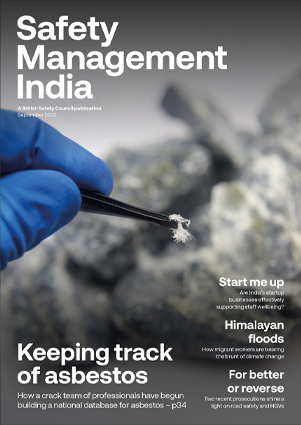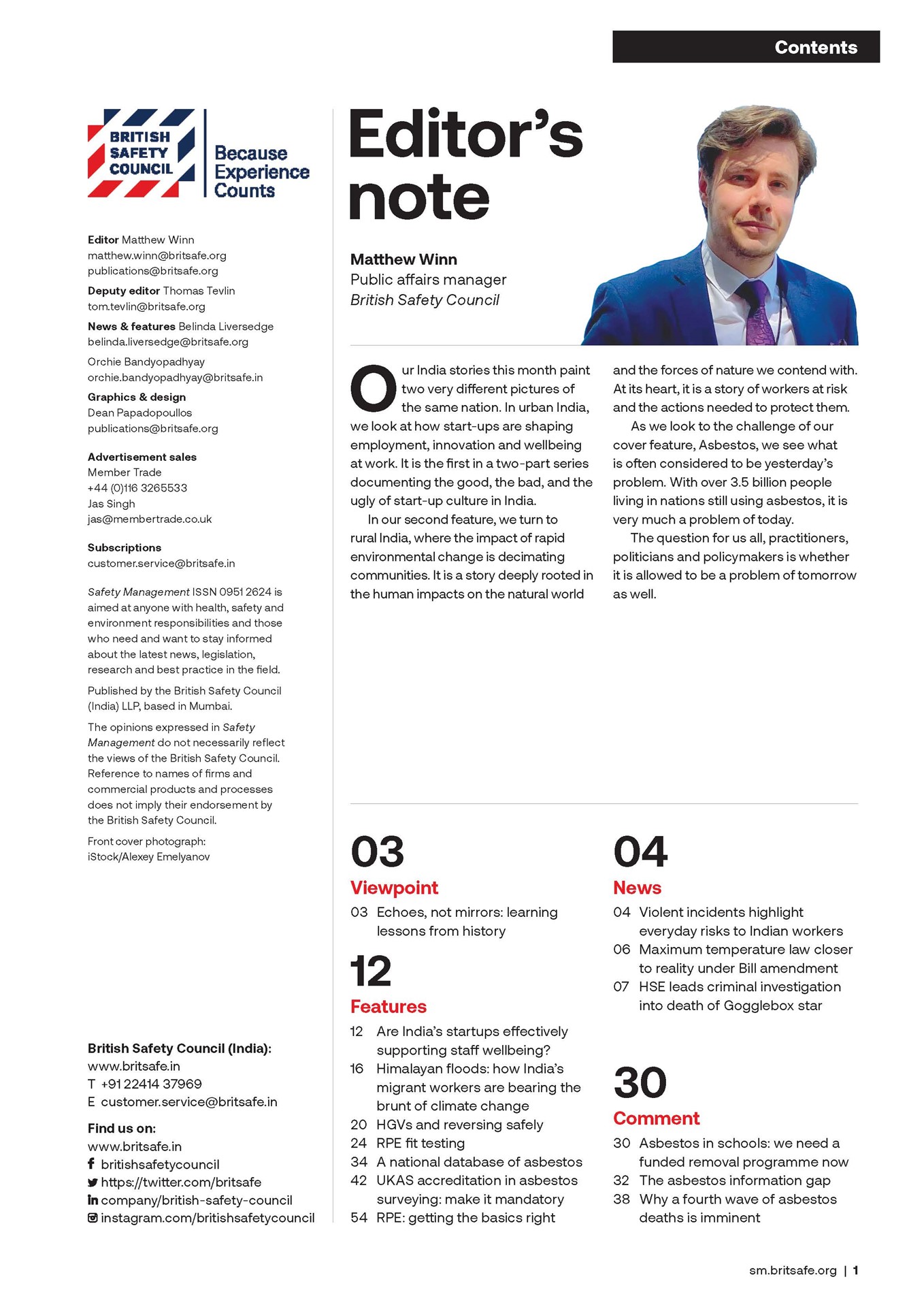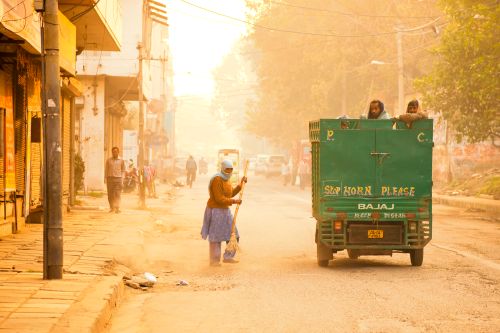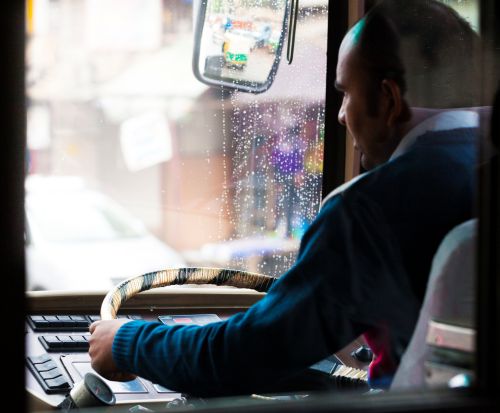Rohan Jindal was cycling to college in Dehli where he was studying engineering, when he had to stop. Not because of the hot sun beating down, but because he couldn’t breathe. And although asthmatic, that wasn’t the trigger. Looking all around he saw construction sites emitting large clouds of dust. This was his ‘a ha’ moment. “What,” he asked himself “do they do in construction to supress the dust?”
Features
Targeting dust in construction
AI-powered dust-suppression system
Jindal is CEO and co-founder of Mistify AI, a clean-tech startup based in Oxford and India and the inventor of an autonomous, AI-powered dust-suppression system designed to combat harmful dust pollution from construction sites.
His co-founder and chief operating officer is Nishika Mehta, who he met two years’ ago when they were both studying for their Masters at Oxford Brookes, he in engineering, she in business management. It is Mehta we are here to meet to find out more about Mistify AI. At this point the duo are raising funds – £1.5 million needed to build the product – and making new connections in the world of environmental management and health and safety.
 Nishika Mehta: "What you need to reduce dust is constant, targeted action because dust is constantly being produced.”
Nishika Mehta: "What you need to reduce dust is constant, targeted action because dust is constantly being produced.”
The idea
In the UK, employers have a legal duty under the Health and Safety at Work Act 1974 and Control of Substances Hazardous to Health (COSHH) regulations to control construction dust and to monitor dust mitigation.
Construction is responsible for a significant chunk – 18 per cent – of the UK’s large particle pollution (PM 10) and is the second-largest source after road transport. In London, this contribution rises to 30 per cent. So, although employers’ duty is to protect their workers’ lung health, they are also required to reduce their impact on public health. “Nearly all the world’s population breathes air that exceeds WHO air quality limits,” says Nishika. “This polluted air contributes to millions of premature deaths every year and remains one of the world’s leading environmental health risks.”
Dust suppression is commonly achieved today using water bowsers (a portable tank), water trucks or water cannons at intervals onto construction sites. The water droplets attach to the dust particles, making them heavier and causing them to fall to the ground. The water dust particles then evaporate, meaning the dust is not released into the air, commonly referred to as ‘wind-blown dust’.
Targeted
Mehta says their solution will be an improvement on current models, targeting the dust properly and negating the need for work stoppages. Laser sensors and cameras on the device will continuously monitor particulate matter (PM) levels on site to apply and adjust ‘misting’. “It will be able to predict that an action – such as a JCB moving – is going to lead to an increase in PM. Then it calculates itself how much precise misting through its nozzle it needs to do,” she explains.
“Current methods lead to frequent stoppages on site as they over wet the site surface and also drench the workers. Our machine will target the dust-making activity meaning work elsewhere on site won’t be affected. It’s much more accurate.”
AI and machine learning algorithms will automatically adjust spray pattern and intensity in real time, targeting high risk zones where there is the most dust and avoiding quiet areas.
It’s about modernising current practices which haven’t changed in decades, says Mehta. “Today, a [machine] will go round in a circle on the construction site about once or twice a day to spray water. But what you need to reduce dust is constant, targeted action because dust is constantly being produced.”
 Image: Mistify AI
Image: Mistify AI
‘75 per cent reduction in PM 2.5’
The other change is that Mistify AI, as its name suggests, disperses ultra-fine atomised mist droplets mixed with surfactants – organic compounds which affect the surface tension of liquids to increase wetting – rather than pumping jets of water. “The science of dust suppression works the same, it’s how we apply it,” she explains with the tinier water droplets acting as a ‘glue’ that binds to the dust and falls to the ground.
Hazardous dust is a problem, but the construction industry’s key concern is productivity – lots of water sprayed about means work must stop. But not with a fine mist: “People get really wet with the current systems, it’s like rain and they can’t work in it,” says Mehta. “This is the major concern of the people we’ve spoken to [for our market research]. Our technique means that we don’t wet the people working on the ground or the site and work can continue. We’ve tested it on a [real site] and the construction workers tell us they pretty much enjoy [the cooling mist].”
There are some misting systems out there for tackling constructi0n site dust, but if the pair are successful with funding, the idea is that their technology will go one step further and work almost continuously. After half an hour set up, it can be left alone to do its job. “The machine has a looping mechanism, it detects when the dust levels are rising, and it needs to mist again. It can be left alone 24/7,” she says.
Early results on the tech – which they have tested manually – has shown a 75 per cent reduction in PM 2.5 and an 80 per cent reduction in the amount of water used. “Current methods are really resource heavy – you need an operator, electricity, water – we’re very precise,” says Mehta.
 Construction is responsible for 18 per cent of the UK’s large particle pollution (PM 10) and is the second-largest source after road transport. Photograph: iStock
Construction is responsible for 18 per cent of the UK’s large particle pollution (PM 10) and is the second-largest source after road transport. Photograph: iStock
The wish list doesn’t stop with mist, machine learning or pollution sensors either. Air pollution monitors fixed onto the device, or using data pulled in from the Air Quality Index in London, will boost data already aggregated from dust the workers are exposed to on site.
Employers will have a ‘dream dataset’ on air pollution, comprising local dust and ambient air, allowing employers to get a full picture of how far they are meeting Workplace Exposure Limits for dust, as required under COSHH. “Our idea is that we will be able to provide on the interface an hourly report on the spikes in air pollution during a day, as well as the daily average. The technology exists, we can achieve it,” she says simply.
Worker health – a hard sell?
Flying the flag for occupational health in the fast-paced world of start-ups, 24-year-old Mehta has a busy schedule ahead of her. She’s just learned that she’s made the Barclays accelerator programme – a mentor-driven programme with industry experts working closely with startups to help them scale up fast.
Mehta, who is from Mumbai, will also be going to India in November with Innovate UK, one of a delegation of 10 who will be invited to ‘match make’ with potential investors and collaborators.
While she admits occupational health is a hard sell – Mehta is the only one in her startup cohort to be working in this space –productivity is not. “The costs of worker health, insurance and the sickness and the delayed work due to dust and air pollution exposure are high – this tech might solve 60 or 70 per cent of those problems,” she tells me confidently. “When I speak to members of government in India, it sounds like a very interesting project to them, a very practical solution to their problems. People have been struggling with the current technology.”
 New Delhi, India. Fire trucks spray water over streets in an attempt to clear the toxic smog cloud. Photograph: iStock
New Delhi, India. Fire trucks spray water over streets in an attempt to clear the toxic smog cloud. Photograph: iStock
Ella’s Law
Doctors and campaigners in the UK are pushing for all of society and industry to do more to reduce air pollution.
In June, the Royal College of Physicians (RCP) published evidence showing that there are now links between air pollution and almost every organ in the body and diseases that affect them.
The RCP used the report to call on UK government to treat air quality as a public health issue. Meanwhile, the Clean Air Bill, or Ella’s Law, created in memory of nine-year-old Ella Adoo-Kissi-Debrah who became the first person to have air pollution listed as a cause of death, is getting its second reading to establish clean air as a human right in the House of Commons on 21 November.
In Delhi in November 2024, particulate air pollution crossed 250 µg/m³, breaching its own air quality standard at 40 µg/m³. But the future is clean, and there is interest in mitigating air pollution, says Mehta. When she speaks to government advisors in India they say “it’s not about regulation, it’s that there’s no technology to help with the regulation”. “When there is tech to [help] then there might be more appetite to get on with complying with regulations,” she explains.
Next steps
For Safety Management, it’s been great to meet someone who is investing their time and passion into worker health and to making a difference. We both agree that worker health, particularly lung health, doesn’t enter conversations or make headlines. In China, construction workers drill and smash concrete under domes, the dust kept conveniently hidden and under wraps, all while its workforce are inhaling it. “It’s the invisible killer,” says Mehta.
But Mehta notices dust everywhere. Visiting a UK hospital recently, where they were constructing a new wing, she says: “The patients couldn’t even open the windows because of the dust. That’s shocking, but the people on the ground are facing it every day, they are the ones affected by it every day.”
Ambitious for their technology to solve a problem close to her heart, she says Mistify AI and its dust suppression misting technology could be used in schools and hospitals as well as on construction sites. “It’s a big and important market. Air has taken a side seat but it’s going to matter a lot. We take it for granted what we breathe in.”
We wish her all the luck in the project – Oxford City Council have already lent their backing – and will ‘watch this space’. “A year and a half after funding, we can start selling,” she says, keen to get going.
For more information see www.mistifyai.com


FEATURES

Delhi’s air pollution problem leaves construction workers jobless and without pay
By Orchie Bandyopadhyay on 10 November 2025
Every autumn and winter, Delhi experiences terrible air pollution that places the health of its 40 million residents at grave risk. But government measures to alleviate the problem by temporarily closing construction sites mean hundreds of thousands of daily-wage labourers are being left without wages and a means of financial support.

India’s road rage crisis: how professional drivers are bearing the brunt
By Orchie Bandyopadhyay on 10 November 2025
High profile reports of violent attacks on people who drive for work purposes, like bus and delivery drivers, have shone a spotlight on the growing problem of road rage in India. Commentators say it is now time for the Government to step up prosecutions of those who act aggressively on the road, while educating drivers on stress management techniques, to tackle the problem.

